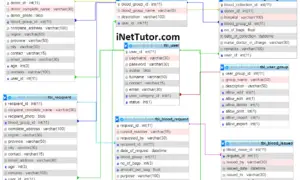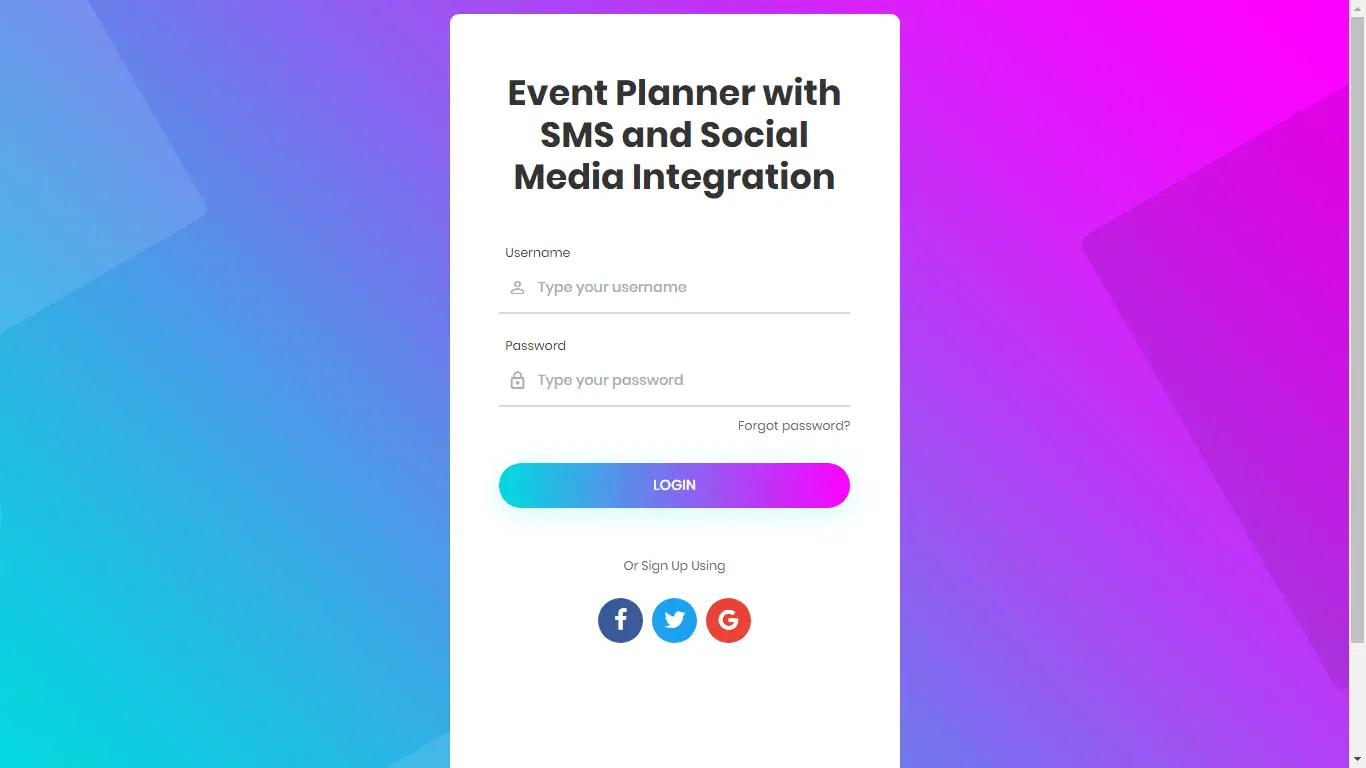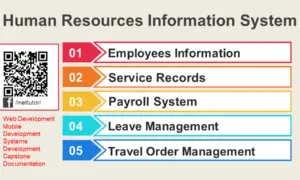Introduction to Information Systems and Computer Programming
Are you interested in diving into the fascinating world of information systems and computer programming? Look no further! In this blog post, we will explore the captivating topic of Introduction to Information Systems and Computer Programming. Whether you’re a student aspiring to pursue a degree in information systems or simply curious about the inner workings of technology, this post will provide you with valuable insights. From understanding the importance of information systems in organizations to unraveling the fundamentals of computer programming, we’ll embark on a journey that unlocks endless possibilities. So, fasten your seatbelt, grab your favorite beverage, and get ready to explore the dynamic intersection of information systems and computer programming.
What is Bachelor of Science in Information System?
Table of Contents
The Bachelor of Science in Information System is an undergraduate degree program that focuses on the integration of technology and business processes to support organizational operations and decision-making. It is designed to equip students with a strong foundation in both information technology and management principles.
In this program, students learn various aspects of information systems, including software development, database management, networking, cybersecurity, and project management. They also gain knowledge in business analytics, systems analysis, and IT strategy, enabling them to understand the strategic importance of technology in organizations.
The BSIS program aims to develop students’ technical skills, problem-solving abilities, and critical thinking capabilities. It prepares them to become competent professionals who can analyze complex business problems, design and develop information systems, and effectively communicate technical concepts to non-technical stakeholders.
Graduates of the Bachelor of Science in Information System program can pursue diverse career paths in the IT industry. They can work as software developers, database administrators, IT consultants, systems analysts, project managers, or information security specialists. Additionally, the program also provides a solid foundation for students who wish to pursue advanced studies in information systems or related fields.
By understanding the scope and significance of the BSIS program, students will appreciate the relevance of the Computer Programming 1 module in their academic journey. It sets the stage for learning fundamental programming concepts and techniques that are essential for building robust and efficient software systems to support organizational goals.
Information Technology vs Information Systems
BSIT (Bachelor of Science in Information Technology) and BSIS (Bachelor of Science in Information Systems) are two distinct undergraduate degree programs in the field of information technology. While both programs focus on the intersection of technology and business, they have different emphases and career pathways. Here are the key differences between BSIT and BSIS:
Focus and Emphasis:
- BSIT: The BSIT program primarily focuses on the technical aspects of information technology. It covers a wide range of technical subjects such as programming, software development, networking, systems administration, cybersecurity, and database management. The emphasis is on developing technical skills and expertise to design, develop, and manage IT infrastructure and software applications.
- BSIS: The BSIS program, on the other hand, emphasizes the integration of technology and business processes. It covers technical subjects similar to BSIT, but also includes courses in business management, systems analysis, project management, and IT strategy. The emphasis is on understanding how technology can be leveraged to support organizational operations and decision-making.
Career Paths:
- BSIT: Graduates of BSIT programs typically pursue technical roles in the IT industry. They can work as software developers, network administrators, systems analysts, cybersecurity specialists, database administrators, or IT consultants. The focus is on technical expertise and hands-on implementation of technology solutions.
- BSIS: Graduates of BSIS programs are prepared for roles that bridge the gap between technology and business. They can work as IT project managers, systems analysts, business analysts, IT consultants, or IT managers. Their knowledge of both technology and business principles allows them to understand organizational needs and effectively communicate with stakeholders.
Curriculum:
- BSIT: The BSIT curriculum places a strong emphasis on technical courses, such as programming languages, algorithms, data structures, software engineering, computer networks, and cybersecurity. It may also include elective courses that allow students to specialize in areas like web development, mobile app development, or data science.
- BSIS: The BSIS curriculum includes both technical and business-oriented courses. In addition to technical subjects, students study courses in business management, systems analysis, project management, database management, IT strategy, and enterprise resource planning. The curriculum provides a well-rounded education in both technology and business domains.
Both BSIT and BSIS programs offer rewarding career opportunities in the IT industry. The choice between the two depends on an individual’s interests and career goals. Those inclined towards technical roles may find BSIT more suitable, while those interested in the integration of technology and business may prefer BSIS.
Information Technology
BSIT (Bachelor of Science in Information Technology) graduates have a wide range of job opportunities in the field of information technology. Here is a brief description of the primary job roles and opportunities for BSIT graduates:
Web and Applications Developer: BSIT graduates can work as web and applications developers, creating and maintaining websites, web applications, and software programs. They are responsible for programming, coding, and ensuring the functionality and usability of these digital solutions.
Junior Database Administrator: In this role, BSIT graduates assist in managing and maintaining databases. They handle tasks such as data organization, security, backups, and performance optimization to ensure smooth database operations.
Systems Administrator: BSIT graduates can work as systems administrators, responsible for managing computer systems and networks within an organization. They handle tasks such as installing, configuring, and maintaining hardware and software systems, ensuring their reliability and security.
Network Engineer: Network engineers design, implement, and maintain computer networks. BSIT graduates in this role work on tasks like network configuration, troubleshooting network issues, and ensuring network performance and security.
Junior Information Security Administrator: BSIT graduates can work in information security roles, assisting in safeguarding computer systems and networks from potential threats. They implement security measures, monitor systems for vulnerabilities, and respond to security incidents.
Systems Integration Personnel: In this role, BSIT graduates are involved in integrating different software systems and technologies within an organization. They ensure seamless communication and interoperability between various systems to enhance efficiency and productivity.
IT Audit Assistant: BSIT graduates can work as IT audit assistants, assisting in assessing and evaluating the IT infrastructure, systems, and processes of an organization. They help identify potential risks and vulnerabilities and ensure compliance with regulatory requirements.
Technical Support Specialist: BSIT graduates can work in technical support roles, providing assistance and troubleshooting for hardware, software, and network issues. They help end-users resolve technical problems and provide guidance on the use of IT systems and applications.
Secondary Job Roles
- QA Specialist
- Systems Analyst
- Computer Programmer
These job roles offer opportunities for growth and advancement within the IT industry. BSIT graduates can further specialize in specific domains of information technology based on their interests and career goals.
Information Systems
BSIS (Bachelor of Science in Information Systems) graduates have diverse job opportunities that bridge the gap between technology and business processes. Here is a brief description of the primary and secondary job roles and opportunities for BSIS graduates:
Primary Job Roles:
- Organizational Process Analyst: BSIS graduates can work as process analysts, responsible for analyzing and improving business processes within an organization. They identify inefficiencies, propose solutions, and implement process improvements to enhance productivity and efficiency.
- Data Analyst: In this role, BSIS graduates work with data to extract insights and support decision-making. They analyze and interpret data, create reports and visualizations, and provide valuable insights to help organizations make informed business decisions.
- Solutions Specialist: BSIS graduates can work as solutions specialists, responsible for evaluating, implementing, and managing technology solutions to address specific business needs. They work closely with stakeholders to understand requirements and recommend appropriate systems or software solutions.
- Systems Analyst: BSIS graduates in this role bridge the gap between business requirements and technology solutions. They analyze business processes, identify system requirements, and design and implement information systems that align with organizational objectives.
- IS Project Management Personnel: BSIS graduates can work in project management roles, specifically focusing on information systems projects. They oversee the planning, execution, and monitoring of IT projects, ensuring they are completed on time, within budget, and meet stakeholder expectations.
Secondary Job Roles:
- Applications Developer: BSIS graduates with programming skills can work as applications developers, designing and building software applications that support specific business processes or functions.
- End User Trainer: In this role, BSIS graduates provide training and support to end-users on how to effectively use information systems and applications. They develop training materials, conduct workshops, and provide ongoing assistance to ensure users can maximize the benefits of the systems.
- Documentation Specialist: BSIS graduates can work as documentation specialists, responsible for documenting system requirements, processes, user manuals, and technical specifications. They ensure accurate and comprehensive documentation for reference and future maintenance.
- Quality Assurance Specialist: BSIS graduates can work as quality assurance specialists, responsible for testing and ensuring the quality and functionality of information systems. They develop test plans, execute tests, identify and report issues, and ensure systems meet quality standards.
BSIS graduates have a unique blend of technology and business knowledge, making them valuable assets to organizations that seek to leverage technology for operational efficiency and strategic decision-making.
What is Computer Programming?
Computer programming is the process of designing, writing, and testing instructions (code) that a computer can execute to perform specific tasks or solve problems. It involves the creation of algorithms, logical reasoning, and problem-solving skills. Programming languages serve as the means of communication between humans and computers, enabling programmers to write code that computers can understand and execute.
Programming is a fundamental skill in the field of computer science and plays a crucial role in various industries. It empowers individuals to create software applications, websites, mobile apps, and other digital solutions that have become an integral part of our daily lives.
Here are some key aspects and benefits of computer programming:
- Problem Solving: Programming is all about solving problems using logical and algorithmic thinking. Programmers break down complex tasks into smaller, manageable steps and design algorithms to solve them efficiently.
- Creativity and Innovation: Programming allows individuals to unleash their creativity by developing unique and innovative solutions to real-world challenges. It provides a platform for transforming ideas into practical applications that can have a positive impact on society.
- Automation and Efficiency: By writing code, programmers can automate repetitive tasks, streamline processes, and improve efficiency. This helps businesses and organizations save time, reduce errors, and increase productivity.
- Versatility and Adaptability: Programming is a versatile skill that can be applied across various domains and industries. From web development to data analysis, artificial intelligence to cybersecurity, programming skills are in high demand in today’s digital-driven world.
- Career Opportunities: Proficiency in programming opens up a wide range of career opportunities. Programmers can work as software developers, web developers, data analysts, systems analysts, cybersecurity specialists, and more. The demand for skilled programmers continues to grow, providing job security and lucrative prospects.
- Continuous Learning: Programming is a field that requires continuous learning and staying updated with the latest technologies and programming languages. This constant learning process keeps programmers engaged and encourages personal and professional growth.
- Collaboration and Problem Solving in Teams: Programming often involves working in teams to develop complex software systems. Collaboration and effective communication skills are vital for successful project completion, as programmers need to work together to solve problems and ensure seamless integration of different components.
In summary, computer programming is a powerful skill that empowers individuals to create, innovate, and solve problems using technology. It offers numerous career opportunities, fosters logical thinking, and contributes to the advancement of society in various fields. Whether you are a beginner or an experienced programmer, continuous learning and honing your programming skills will keep you at the forefront of this rapidly evolving field.

Types of Computer Programming
There are numerous computer programming languages available, each with its own syntax, features, and use cases. Here are some examples of popular programming languages:
- Python: Python is a versatile and beginner-friendly language known for its simplicity and readability. It is widely used in web development, data analysis, artificial intelligence, and scientific computing.
- Java: Java is a robust and platform-independent language commonly used for developing enterprise-level applications, Android apps, and server-side programming.
- C++: C++ is a powerful language often used for system-level programming, game development, and performance-critical applications. It offers low-level control and high performance.
- JavaScript: JavaScript is primarily used for web development to create interactive and dynamic websites. It runs on the client-side and enables interactivity and functionality on web pages.
- C#: C# (pronounced “C sharp”) is a programming language developed by Microsoft. It is widely used for developing Windows applications, game development using Unity, and backend programming with the .NET framework.
- Ruby: Ruby is a dynamic, object-oriented language known for its elegant syntax and focus on simplicity. It is commonly used in web development, particularly with the Ruby on Rails framework.
- PHP: PHP is a server-side scripting language mainly used for web development. It is particularly popular for building dynamic websites and interacting with databases.
- Swift: Swift is a modern programming language developed by Apple for iOS, macOS, watchOS, and tvOS app development. It offers safety, speed, and ease of use.
- SQL: SQL (Structured Query Language) is a specialized language used for managing and manipulating databases. It allows users to retrieve, store, and modify data in relational database systems.
- MATLAB: MATLAB is a language used primarily in scientific and numerical computing. It offers extensive mathematical functions, data analysis tools, and visualization capabilities.
These are just a few examples, and there are many more programming languages available. Each language has its own strengths and weaknesses, and the choice of language depends on the specific application, project requirements, and personal preference.
Importance of Computer Programming in BSIS and BSIT
Computer programming is a vital component of both Bachelor of Science in Information Systems (BSIS) and Bachelor of Science in Information Technology (BSIT) programs. Here are some insights into why computer programming is necessary and important in these fields:
- Development of Software Solutions: Both BSIS and BSIT programs aim to equip students with the skills needed to develop software solutions to meet organizational and user needs. Computer programming provides the foundation for designing, coding, and implementing these software solutions.
- Customization and Integration: In BSIS and BSIT, students learn how to customize and integrate existing software systems to align with specific business requirements. Programming skills are crucial for modifying and extending functionalities, integrating disparate systems, and ensuring seamless data flow between various applications.
- Problem Solving and Logical Thinking: Programming fosters problem-solving skills and logical thinking. Students learn to break down complex problems into smaller, manageable tasks and develop algorithms to solve them. This analytical mindset is crucial for identifying and addressing issues in information systems and IT infrastructure.
- Automation and Efficiency: Computer programming enables automation, streamlining routine tasks, and improving operational efficiency. BSIS and BSIT graduates can use programming skills to automate repetitive processes, develop scripts for data manipulation, and create software tools to enhance productivity and accuracy.
- System Design and Architecture: Both BSIS and BSIT programs emphasize system design and architecture. Programming skills are essential for designing software systems, determining the flow of data, defining modules and components, and ensuring efficient communication between different system elements.
- Collaboration with Developers and IT Professionals: In organizations, BSIS and BSIT professionals often collaborate with software developers and IT teams. Understanding programming concepts and having basic coding skills facilitate effective communication, collaboration, and coordination with developers in designing and implementing information systems.
- Innovation and Adaptability: Computer programming cultivates a mindset of innovation and adaptability. BSIS and BSIT graduates with programming skills are better equipped to leverage emerging technologies, explore new software development frameworks, and adapt to evolving industry trends.
- Career Opportunities: Proficiency in programming opens up a wide range of career opportunities in both BSIS and BSIT fields. Graduates can pursue roles such as software developers, systems analysts, database administrators, IT consultants, and more. The ability to code enhances their competitiveness and widens their career prospects.
Summary
The topic and lesson on Introduction to Information Systems and Computer Programming provide a foundational understanding of the field of information systems and the importance of computer programming. The lesson covers key concepts such as the role of information systems in organizations, the components of an information system, and the basics of computer programming.
By studying this topic, students gain insights into the significance of information systems in managing and leveraging data for decision-making and operational efficiency. They also learn about the various career paths and opportunities available in the field.
This topic serves as a solid foundation for students pursuing a degree in information systems or related fields. It equips them with essential knowledge and skills to understand the role of information systems, apply computer programming principles, and navigate the dynamic world of technology. With this foundation, students are well-prepared to explore advanced topics and pursue a successful career in the field of information systems and computer programming.
Assessment
In an essay, please provide a comprehensive analysis and discussion on the topic of “Introduction to Information Systems and Computer Programming.” Your essay should cover the following aspects:
- Importance of Information Systems: Explain the significance of information systems in organizations and their role in managing data, facilitating decision-making, and improving operational efficiency. Provide real-world examples to support your arguments.
- Components of an Information System: Discuss the key components that make up an information system, including hardware, software, data, people, and processes. Explain how these components work together to create an effective information system.
- Functions and Types of Information Systems: Explore the different functions performed by information systems, such as transaction processing, management information systems, decision support systems, and executive information systems. Discuss the characteristics and uses of each type.
- Basics of Computer Programming: Explain the fundamental concepts of computer programming, including variables, data types, control structures (such as loops and conditionals), and algorithms. Provide examples to illustrate these concepts and their relevance in programming.
- Role of Programming in Information Systems: Analyze the role of computer programming in information systems development and customization. Discuss how programming enables the creation of software solutions, customization of existing systems, and automation of tasks.
- Career Opportunities in Information Systems and Computer Programming: Explore the diverse career opportunities available in the field, ranging from software development to systems analysis and database administration. Discuss the skills and knowledge required for these roles and highlight the demand for professionals in the industry.
- Emerging Trends and Challenges: Discuss current trends and advancements in information systems and computer programming, such as cloud computing, big data analytics, artificial intelligence, and cybersecurity. Address the challenges and ethical considerations associated with these emerging technologies.
- Conclusion: Summarize the key points discussed in your essay and highlight the importance of understanding information systems and computer programming in today’s digital era. Reflect on the potential impact of these disciplines on businesses, society, and technological advancements.
Note: The essay should be well-structured, articulate, and supported by relevant examples and references. It should demonstrate a deep understanding of the subject matter and showcase critical thinking and analysis skills.
Quiz
- What is the primary focus of the Bachelor of Science in Information Technology (BSIT) program? a) Integration of technology and business processes
b) Technical aspects of information technology
c) Both A and B
d) None of the above - Which of the following job roles is commonly associated with BSIT graduates?
a) Organizational Process Analyst
b) Data Analyst
c) Systems Analyst
d) All of the above - Which programming language is widely used in web development, data analysis, and artificial intelligence?
a) Python
b) Java
c) C++
d) JavaScript - What is the primary job role of a Systems Analyst?
a) Managing computer systems and networks
b) Developing software applications
c) Bridging the gap between business requirements and technology solutions
d) Analyzing and improving business processes - Which degree program focuses on the integration of technology and business processes?
a) Bachelor of Science in Information Technology (BSIT)
b) Bachelor of Science in Information Systems (BSIS)
c) Both A and B
d) None of the above - Which programming language is commonly used for developing Android apps?
a) Python
b) Java
c) C++
d) JavaScript - What is the primary job role of a Data Analyst?
a) Analyzing and interpreting data
b) Managing computer systems and networks
c) Developing software applications
d) Bridging the gap between business requirements and technology solutions - What is the emphasis of the Bachelor of Science in Information Systems (BSIS) program?
a) Technical aspects of information technology
b) Integration of technology and business processes
c) Both A and B
d) None of the above - Which programming language is commonly used for developing Windows applications?
a) Python
b) Java
c) C#
d) Ruby - What is the primary job role of a Web and Applications Developer?
a) Managing computer systems and networks
b) Analyzing and interpreting data
c) Developing websites and software programs
d) Bridging the gap between business requirements and technology solutions
Related Topics and Articles:
Area of Rectangle Solver in CSharp
You may visit our Facebook page for more information, inquiries, and comments. Please subscribe also to our YouTube Channel to receive free capstone projects resources and computer programming tutorials.
Hire our team to do the project.


